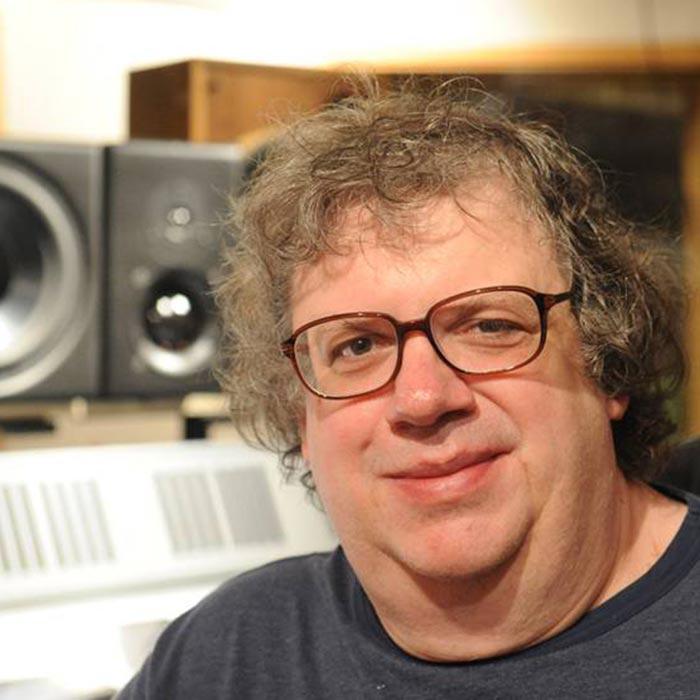Mick Guzauski: Mastering the Mix with Sonnox Plug-ins and the Iconic Sony Oxford Console
Multi-Grammy Award-winning engineer and mixer Mick Guzauski has worked with a star-studded lineup, including Eric Clapton, Mariah Carey, Madonna, Natalie Cole, Barbra Streisand, and Prince.
With a six-figure OXF-R3 Sony Oxford Console as the centerpiece of his home studio, Guzauski has positioned himself among the industry’s elite. We caught up with him at his Barking Doctor Studio in Mount Kisco, NY, where he shared insights into his setup, mixing techniques, and how Sonnox plug-ins play a crucial role in his workflow.

A Seamless Integration of Analog and Digital
Guzauski’s setup is a blend of the analog warmth of the Oxford console and the digital precision of Pro Tools HD, augmented by Sonnox plug-ins and select external hardware. “My usual signal chain is Pro Tools HD to the Oxford, looped back into the Oxford or through Pro Tools hardware,” he explains. “When coming back into Pro Tools, I use the Sonnox Limiter on the stereo mix—it’s a really nice piece of software.
My usual signal chain is Pro Tools HD to the Oxford, looped back into the Oxford or through Pro Tools hardware
You can achieve significant limiting without losing the transients, and the Enhance feature adds a warm, tube-like quality just before overload, making it sound big and lively.”
Balancing Console and Plug-ins
While Guzauski relies heavily on his Oxford console, he also integrates Sonnox plug-ins for their flexibility and consistency, especially when working outside his studio. “The plug-in EQ and Dynamics are very close to the console EQ and Dynamics,” he notes. “I used them extensively on the new Return To Forever Anthology project with Chick Corea, Stanley Clarke, Al DiMeola, and Lenny White, even though the mix was through a Neve 8078 analog console.”
Dynamic Control with Sonnox Plug-ins
Guzauski frequently uses the Sonnox Dynamics plug-in on bass and kick drums, preferring its gentle yet effective control. “I tend to use it very gently, as I don’t want to lose the dynamics of the audio,” he says. “I’ll often set a slow attack on the compressor to enhance transients and ensure they cut through. The gates and expanders are also great for removing leakage on tracks that need it.”
Smooth and Musical EQ with Sonnox
The Oxford EQ is Guzauski’s go-to for its smooth, analog-like sound. “You can do fairly drastic EQ without it getting harsh,” he says. “I can boost high frequencies like 15 or 16 kHz and get a lot of air and articulation without grit or harshness. It’s very precise, allowing me to address problem frequencies without damaging the overall sound.”
Precision De-Essing with SuprEsser
Guzauski is a big fan of the Sonnox SuprEsser, praising its ability to accurately target problem frequencies in vocals or instruments. “It tracks the dynamics of the audio, adjusting the threshold based on the overall level, so it doesn’t over-attenuate loud passages or under-attenuate soft ones,” he explains. “The SuprEsser’s adjustable band pass and steep filters are invaluable for controlling harshness in vocals, especially when singers get louder.”
Expanding the Palette with Reverb and Inflator
Guzauski has also found the Oxford Reverb and Inflator plug-ins to be exceptional tools in his mixing arsenal. “The Reverb is one of the only non-convolution plug-ins I like—it’s high fidelity, has a smooth tail, and sounds natural,” he says. “The Inflator is really cool too. It changes the harmonic content and makes things sound fuller, almost like analog tape or tube gear, but without losing transients.”
Mixing for High-Profile Projects and Beyond
Guzauski recently applied his signature touch to Seal’s latest single, a David Foster production delivered as an 80-track Pro Tools session. “I used a lot of Oxford EQ and Dynamics on this mix,” he notes. “Seal’s lead vocal has Dynamics, and the bass was enhanced with a slow attack setting to preserve transients. On the bus mix, I used Oxford EQ with a boost above 15 kHz for air and added some presence around 5 kHz.”
A Career Built on Passion for Music and Sound
Guzauski’s journey began in Rochester, NY, where his early interest in music, electronics, and recording led him to build a studio in his parents’ basement. His career took off after connecting with Chuck Mangione, and he eventually moved to Los Angeles, where he worked with legendary figures like Quincy Jones and Walter Afanasieff.
Reflecting on the changing landscape of the music industry, Guzauski observes, “Back then, there was a lot of camaraderie and cross-pollination in the big studios. That’s how a lot of my gigs came about, meeting people in other rooms who needed help with their projects. It was great for both the music and the business.”
Staying True to the Craft
Despite the industry’s shifts, Guzauski remains committed to his craft. “I’m not in love with the music business, but I’m in love with music and my craft,” he says. “Even though the way it’s done and the compensation have changed, I still get lost in it. Projects like Seal’s track, with great musicians and producers, make it worth it.”
Looking ahead, Guzauski sees a growing trend of indie projects with private financing and less major label involvement. “There’s a shift towards music that people believe in, rather than just fitting a commercial mold,” he says. “It’s all about the music first, and the business second.”
